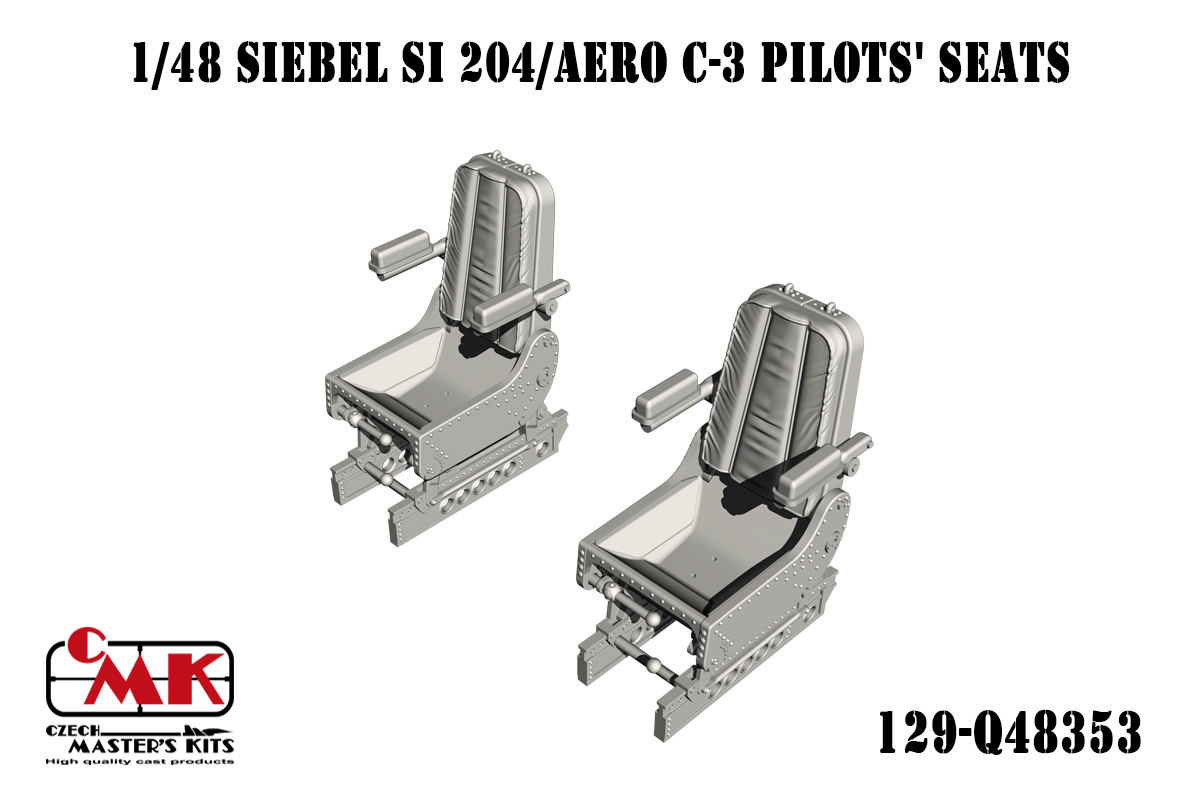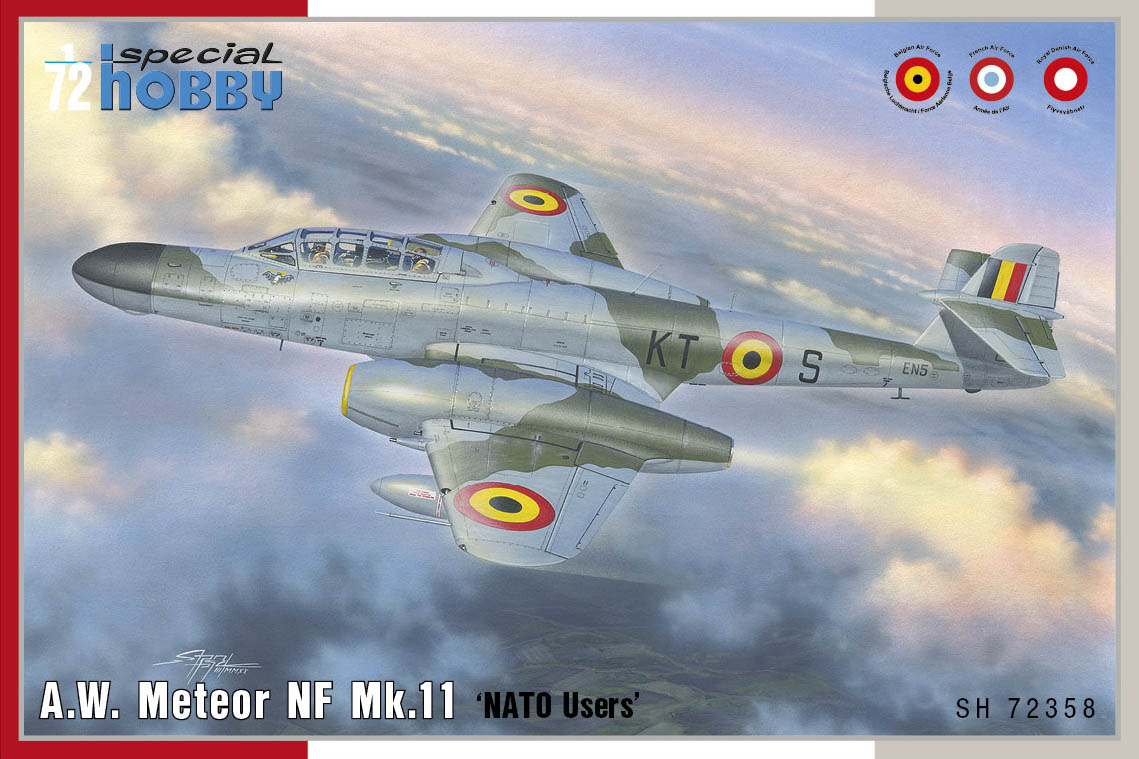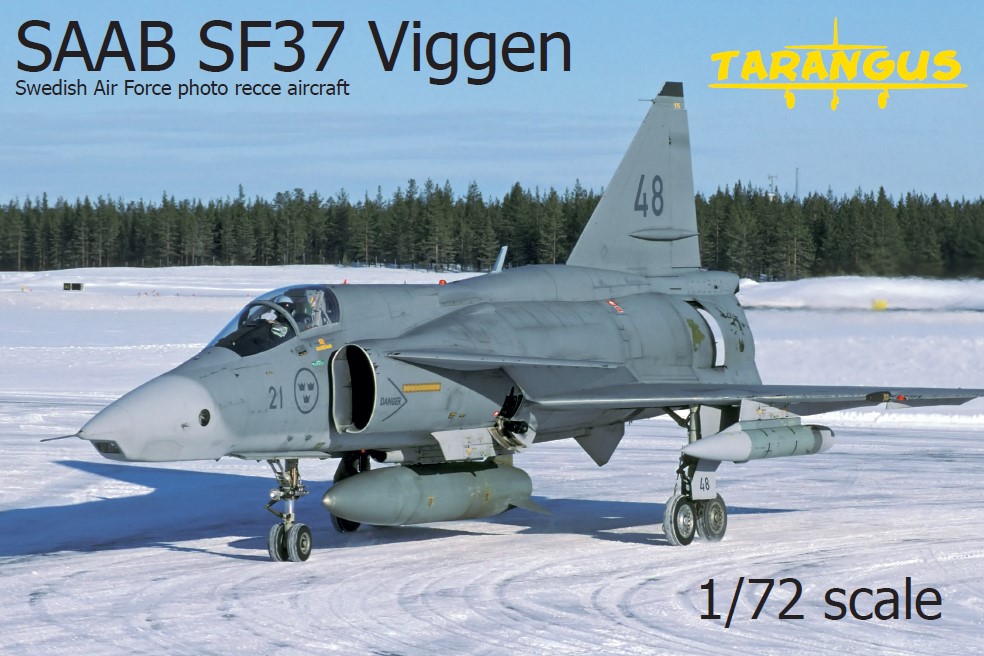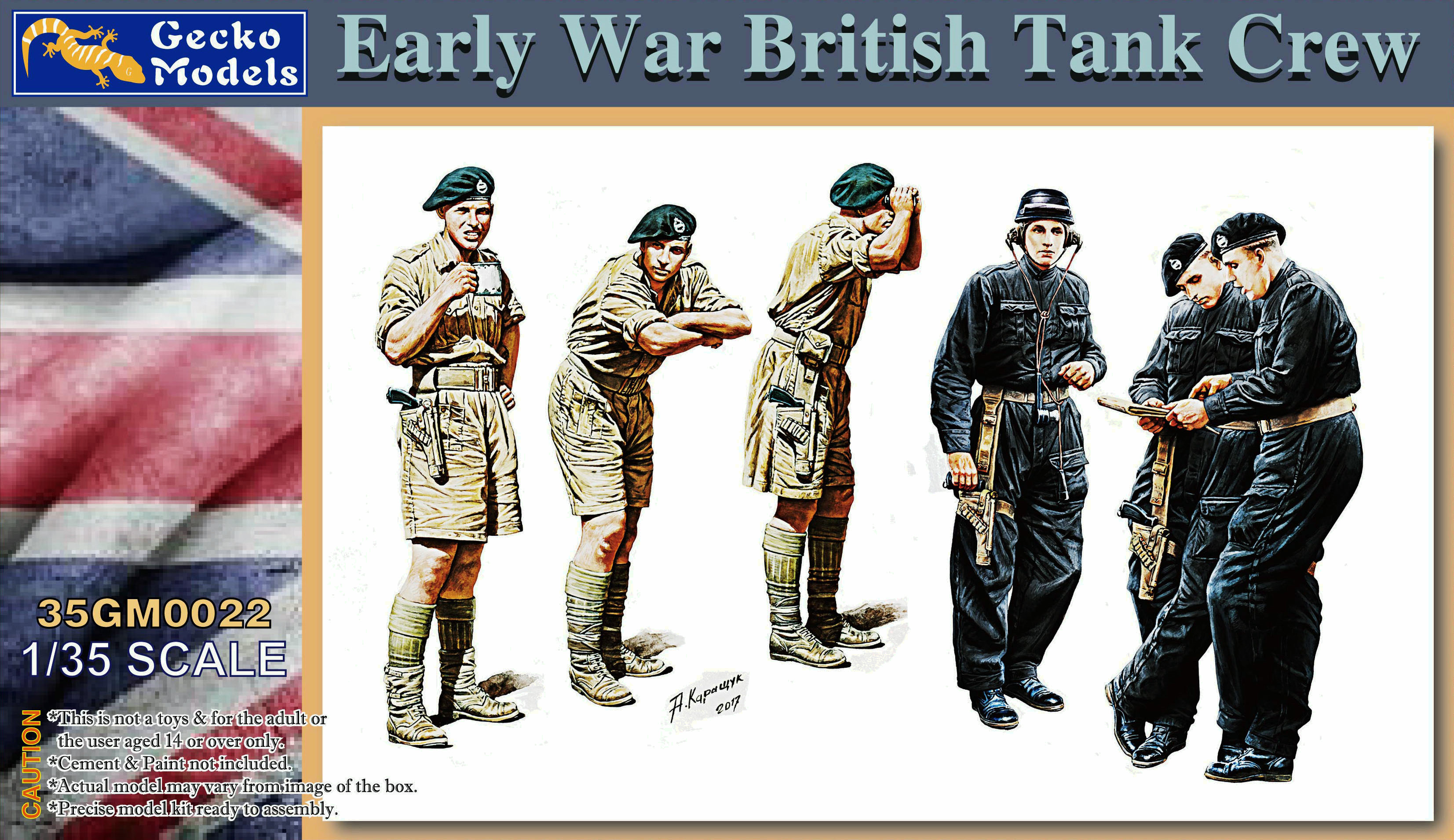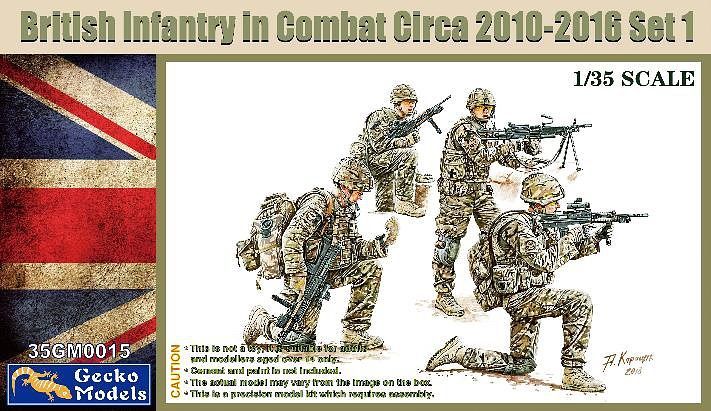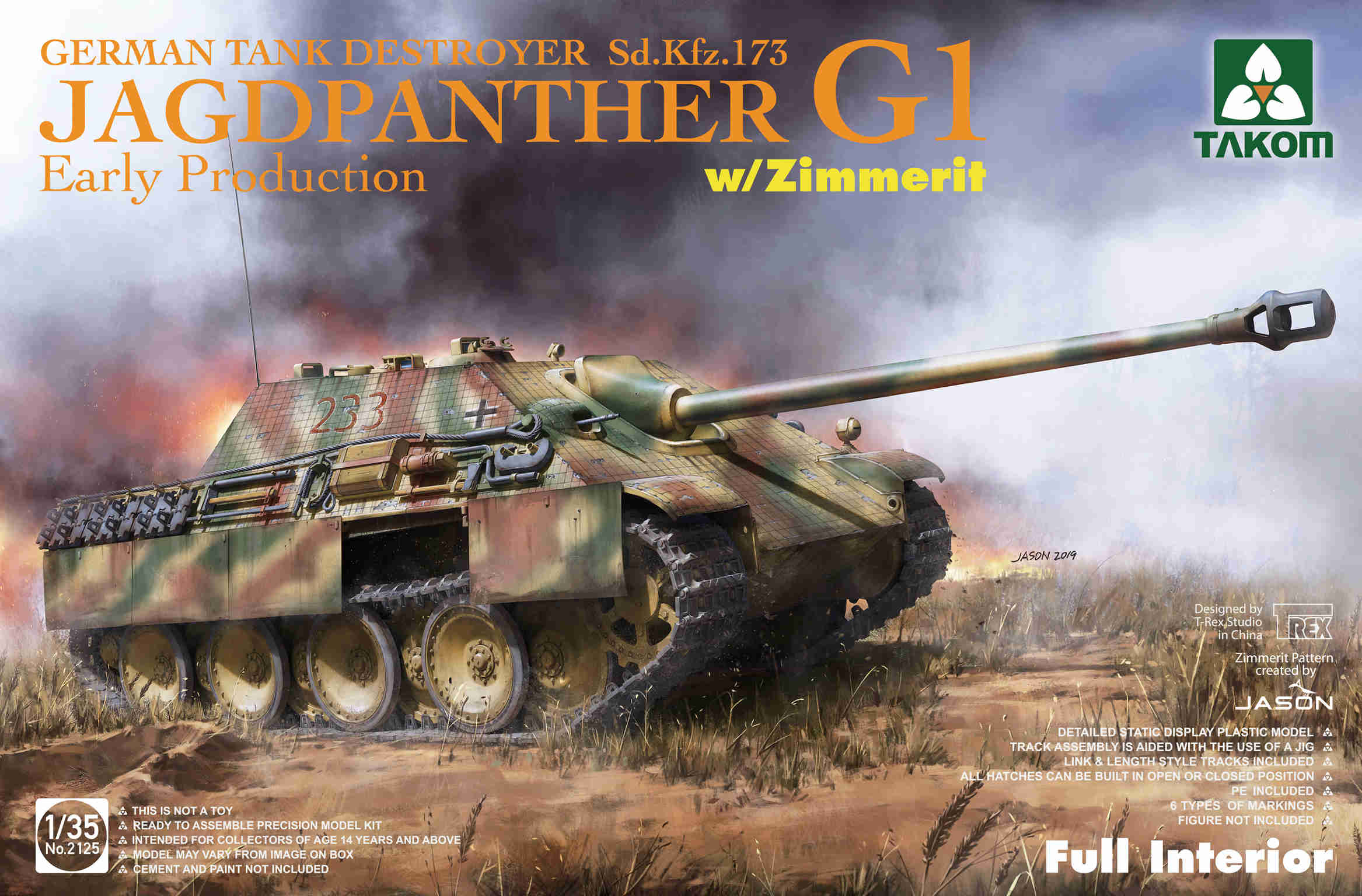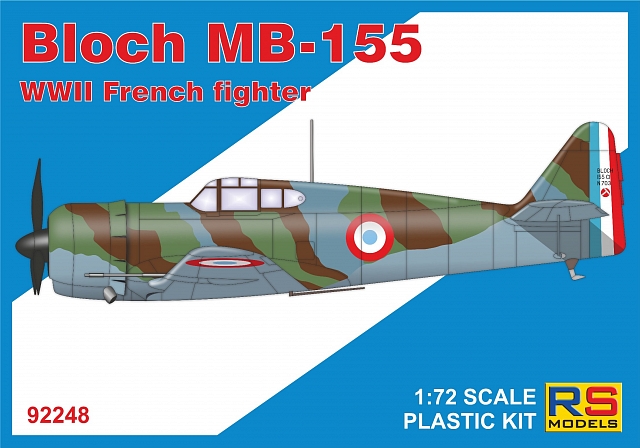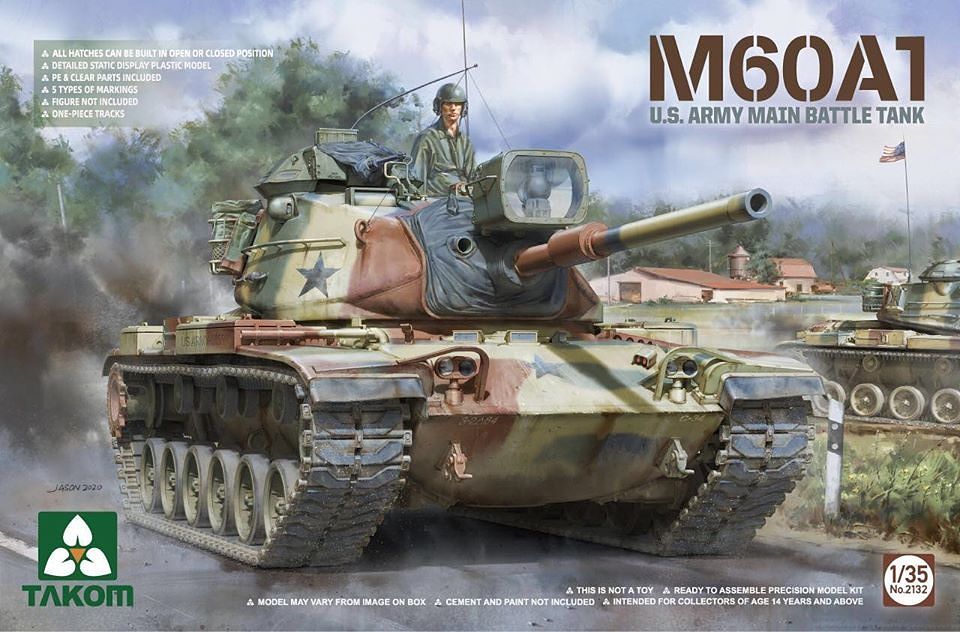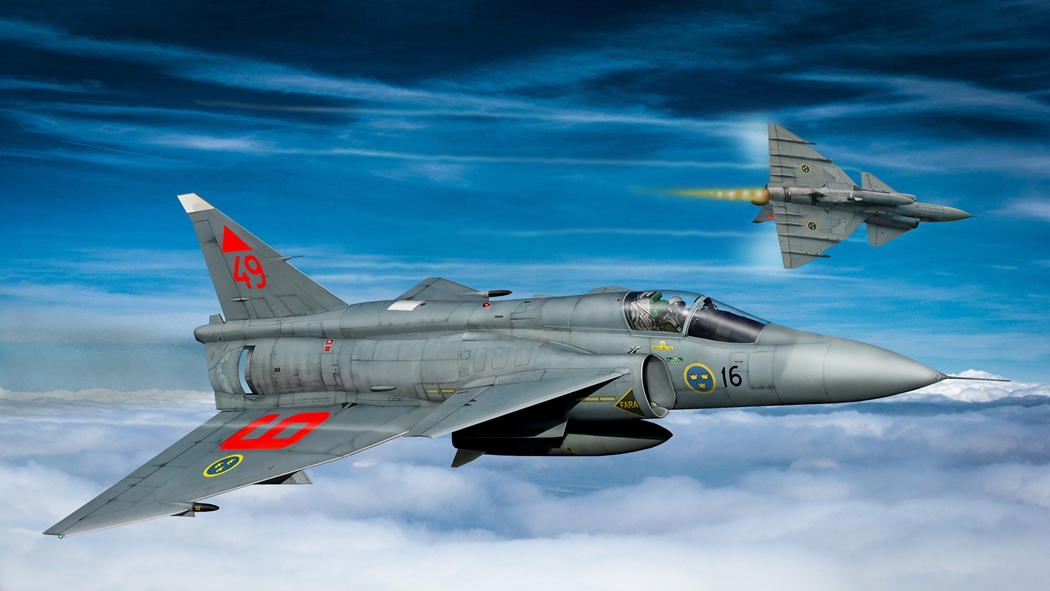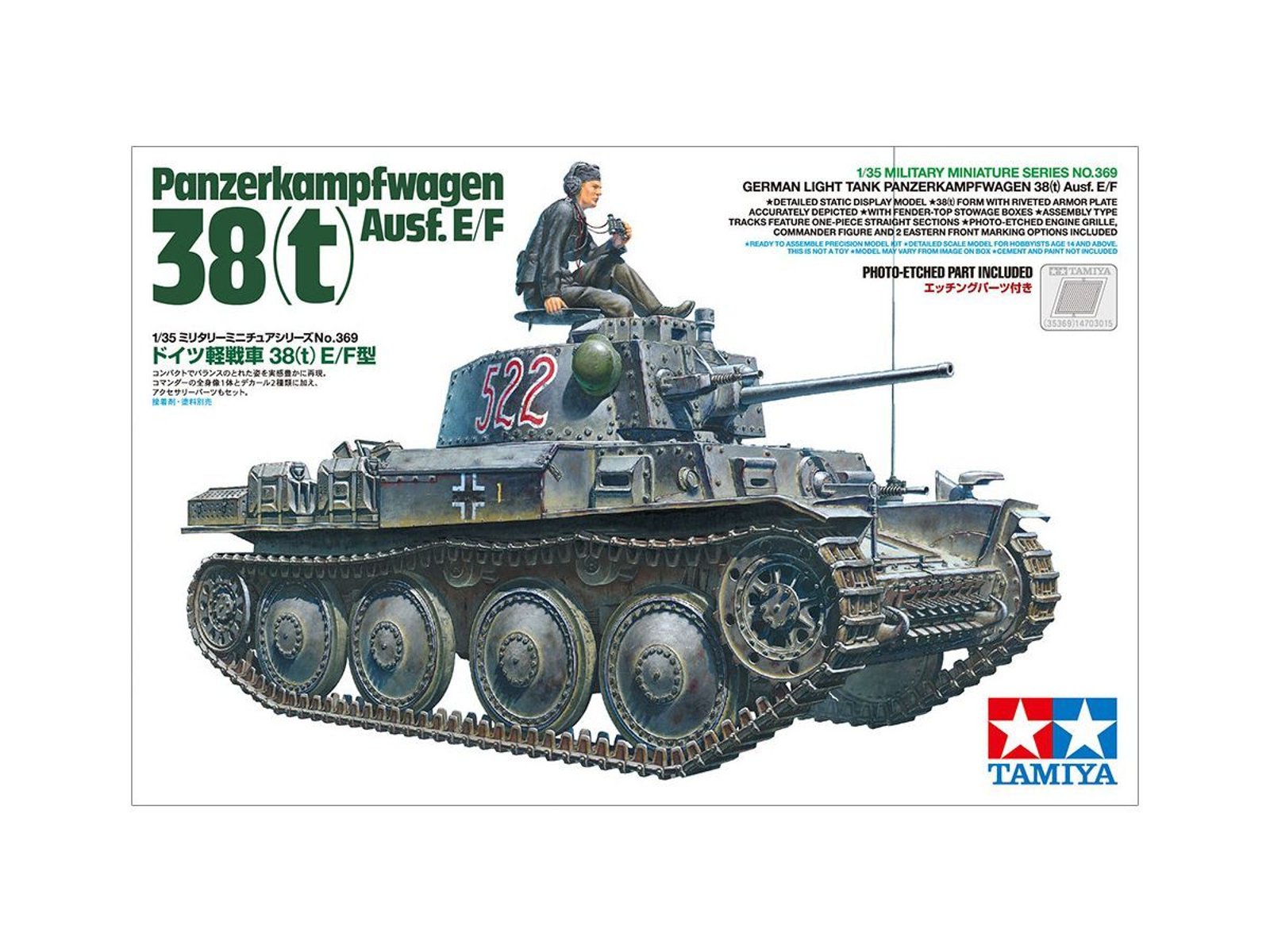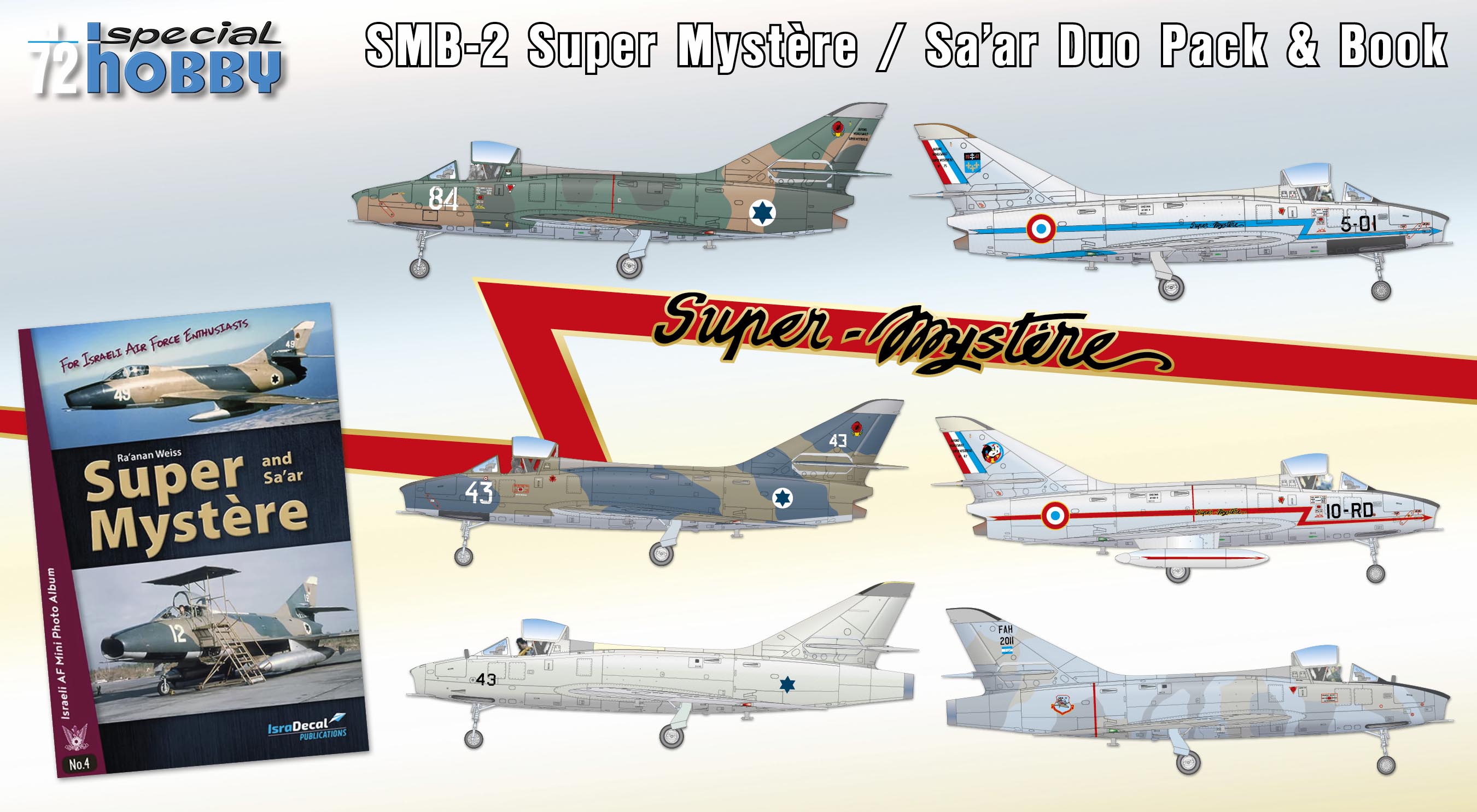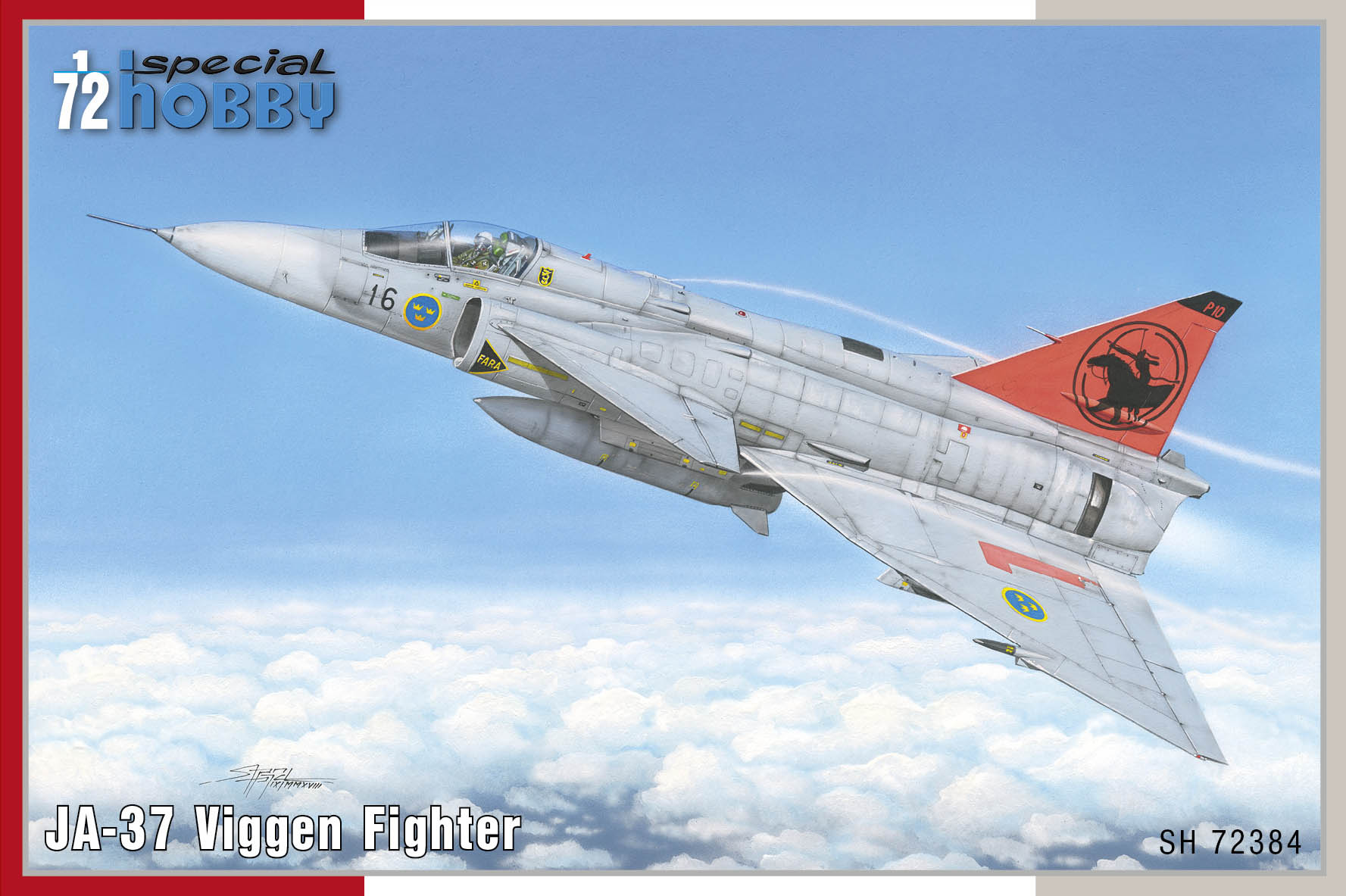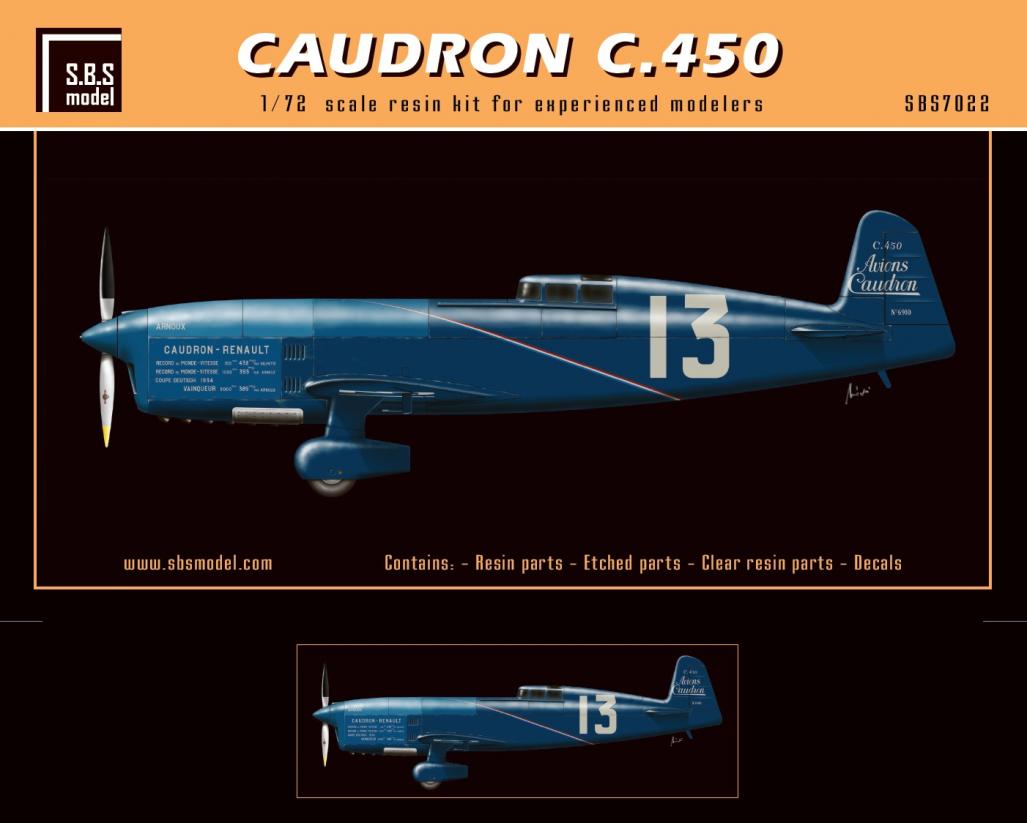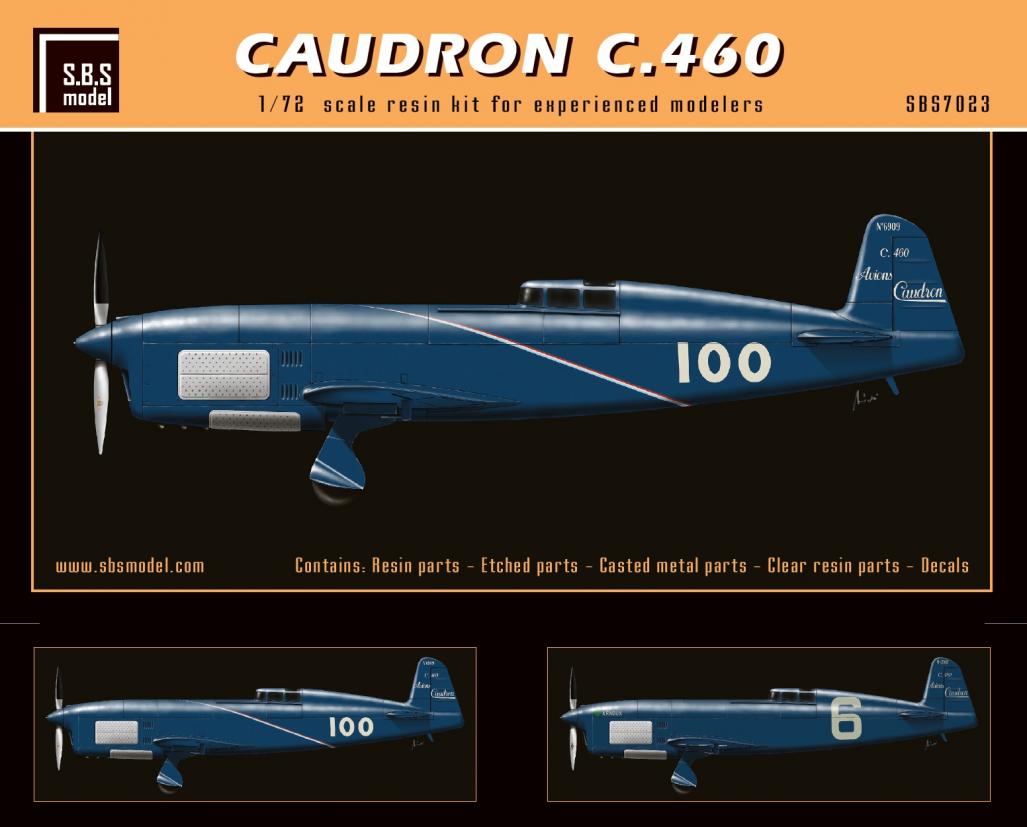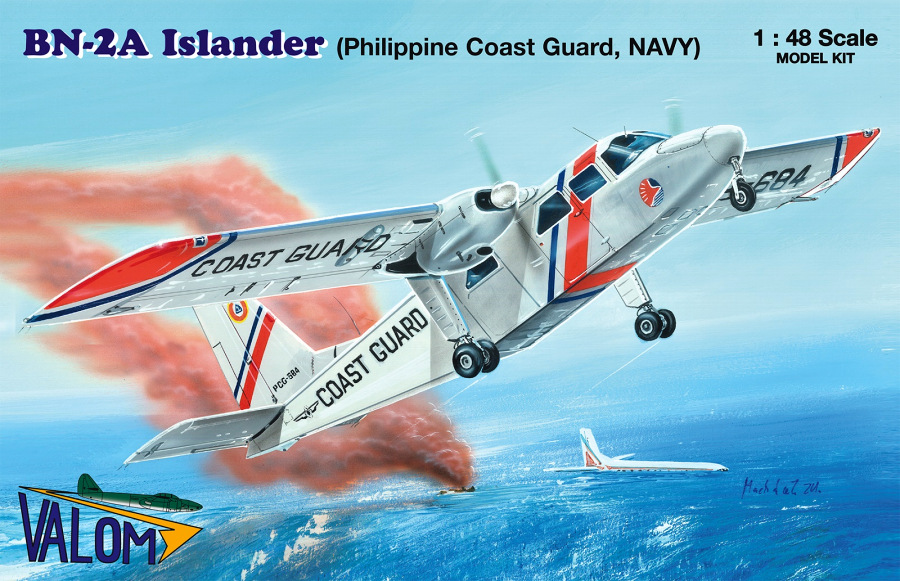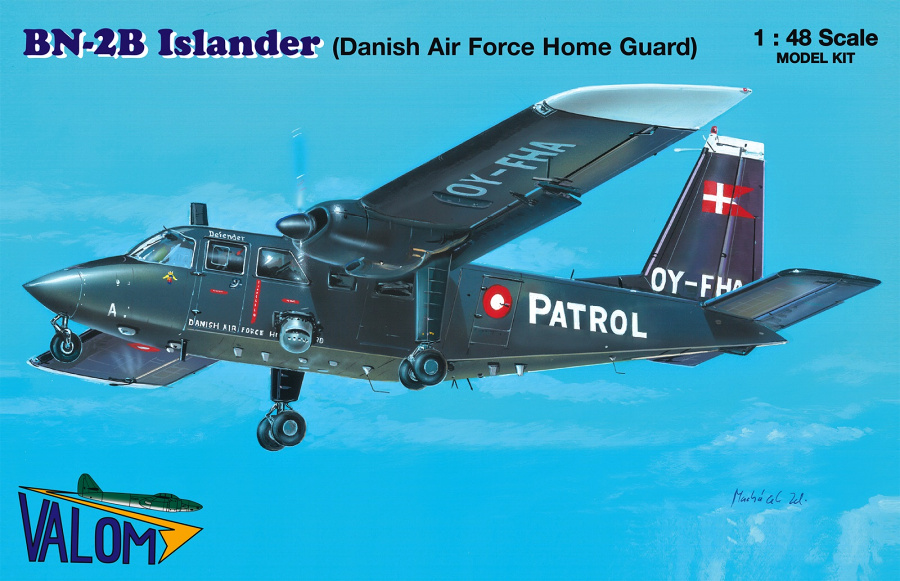Modely
Celkem 1064 produktů
Plastikový model letadla 1/72 A.W. Meteor NF Mk.11 ‘Nato Users’. This British all weather twin jet fighter aeroplane not only served quite a long time with the RAF, it was also exported with considerable success to a number of NATO countries as well as to the Middle East. four grey styrene sprues, one clear plastic sprue. decal sheet covering three options come with a full set of airframe stencils marking options for a Belgian, French and a Danish machines
Plastikový model letadla 1/72 A.W. Meteor NF Mk.11 ‘Nato Users’. This British all weather twin jet fighter aeroplane not only served quite a long time with the RAF, it was also exported with considerable success to a number of NATO countries as well as to the Middle East. four grey styrene sprues, one clear plastic sprue. decal sheet covering three options come with a full set of airframe stencils marking options for a Belgian, French and a Danish machines
1/35 British ATMP w/ Ammo Pallet. This is an injection-plastic figure set for use with military dioramas or individual display. Gecko Models brings us this highly detailed set of British Infantry. These soldiers are frozen in combat and are featured with a more modern look of about 2010- 2016. Includes parts to build 4 figures, weapons and equipment; comes with photo etched parts and decals. *Actual models may vary from image on the box. [Mold Color]: Gray [Includes]: Photo-etched parts and decals
1/35 British ATMP w/ Ammo Pallet. This is an injection-plastic figure set for use with military dioramas or individual display. Gecko Models brings us this highly detailed set of British Infantry. These soldiers are frozen in combat and are featured with a more modern look of about 2010- 2016. Includes parts to build 4 figures, weapons and equipment; comes with photo etched parts and decals. *Actual models may vary from image on the box. [Mold Color]: Gray [Includes]: Photo-etched parts and decals
1/35 British Infantry in Combat 2010-16 Set 2. This is an injection-plastic figure set for use with military dioramas or individual display. Gecko Models brings us this highly detailed set of British Infantry. These soldiers are frozen in combat and are featured with a more modern look of about 2010- 2016. Includes parts to build 4 figures, weapons and equipment; comes with photo etched parts and decals. *Actual models may vary from image on the box. [Mold Color]: Gray [Includes]: Photo-etched parts and decals
1/72 F4F-4 Wildcat Dinghy Set for Airfix. This set is designed to be used with the Airfix model and offers an open dorsal compartment with the inflatable dinghy. The installation to the model is easy and straightforward and the set provides eye catching extra detail to your model. Operators: USA/WWII
1/72 F4F-4 Wildcat Dinghy Set for Airfix. This set is designed to be used with the Airfix model and offers an open dorsal compartment with the inflatable dinghy. The installation to the model is easy and straightforward and the set provides eye catching extra detail to your model. Operators: USA/WWII
1/35 British Infantry In Combat Circa 2010-2016 Set 1. This is an injection-plastic figure set for use with military dioramas or individual display. From Gecko Models comes this 1/35 scale British Infantry In Combat Circa 2010-2016, which comes with parts to build these 4 figures. Paint and cement not included.
1/48 N1K2-J Shiden Kai (George) - Cockpit set . Finely detailed interior set tailored to fit the new Hasegawa’s rendition (with recessed panel lines) of the George, arguably the very best fighter plane of the Japanese Navy in WW2. The set contains also a pre-painted fret with the instrument panel and seat belts. Country of origin: Japan / WWII
1/48 N1K2-J Shiden Kai (George) - Cockpit set . Finely detailed interior set tailored to fit the new Hasegawa’s rendition (with recessed panel lines) of the George, arguably the very best fighter plane of the Japanese Navy in WW2. The set contains also a pre-painted fret with the instrument panel and seat belts. Country of origin: Japan / WWII
1/35 Sd.Kfz. 173 Pz.Jg. Jagdpanther. The Panzerjäger Panther Sd.Kfz. 173, or Jagdpanther, was a heavy tank destroyer based on the chassis of the Panzer V Panther and was armed with the same long-barreled 8.8 cm gun as the Tiger II or ‘King Tiger’, and a single 7.92 mm MG-34 machine gun in the front glacis plate for local defense. The Jagdpanther had a good power-to-weight ratio and a powerful main gun, which enabled it to destroy any Allied tank. Based on the existing Panther chassis, the vehicle did not suffer too many mechanical problems, and had an upgraded transmission and final drive to counter the Panther's main weakness. The Jagdpanther was powered by the 700hp Maybach HL230 P30 V-12 petrol engine and a 7 speed forward, 1-speed reverse transmission system with a maximum speed of 46 km/h (28.6 mph) and a range of about 200 kilometers (99 miles). It was manned by a crew of five: a driver, radio-operator, commander, gunner and a loader. Two main variants can be distinguished, the earlier (1944 model) G1 with a small internally-bolted main gun mantlet and a modified Panther A engine deck, and the later (1945 model) G2 with a larger, externally-bolted mantlet and a modified Panther G engine deck, though late G1s also had a larger mantlet. Early Jagdpanthers had two vision openings for the driver, whereas late versions had only one. The main gun originally had a monobloc gun barrel, but later versions were equipped with the PaK 43/4 gun with a two-part barrel. Early G1s (to September 1944) were given a distinctive pattern of Zimmerit anti-magnetic mine coating.
1/35 Sd.Kfz. 173 Pz.Jg. Jagdpanther. The Panzerjäger Panther Sd.Kfz. 173, or Jagdpanther, was a heavy tank destroyer based on the chassis of the Panzer V Panther and was armed with the same long-barreled 8.8 cm gun as the Tiger II or ‘King Tiger’, and a single 7.92 mm MG-34 machine gun in the front glacis plate for local defense. The Jagdpanther had a good power-to-weight ratio and a powerful main gun, which enabled it to destroy any Allied tank. Based on the existing Panther chassis, the vehicle did not suffer too many mechanical problems, and had an upgraded transmission and final drive to counter the Panther's main weakness. The Jagdpanther was powered by the 700hp Maybach HL230 P30 V-12 petrol engine and a 7 speed forward, 1-speed reverse transmission system with a maximum speed of 46 km/h (28.6 mph) and a range of about 200 kilometers (99 miles). It was manned by a crew of five: a driver, radio-operator, commander, gunner and a loader. Two main variants can be distinguished, the earlier (1944 model) G1 with a small internally-bolted main gun mantlet and a modified Panther A engine deck, and the later (1945 model) G2 with a larger, externally-bolted mantlet and a modified Panther G engine deck, though late G1s also had a larger mantlet. Early Jagdpanthers had two vision openings for the driver, whereas late versions had only one. The main gun originally had a monobloc gun barrel, but later versions were equipped with the PaK 43/4 gun with a two-part barrel. Early G1s (to September 1944) were given a distinctive pattern of Zimmerit anti-magnetic mine coating.
Plastikový model letadla 1/72 Caudron C-445/448 4 decal v. for France, Spain. Caudron C-455 was a conventionally configured low-wing cantilever monoplane with tailwheel undercarriage. The main undercarriage units retracted into the engine nacelles. Construction was wooden throughout, with wooden skinning everywhere but the forward and upper fuselage sections, which were skinned in metal. As usually configured, the cabin seated six passengers with baggage compartments fore and aft, and a toilet aft. 4 decal variants1. Caudron 448 Goéland, N°7272 F-AOMX, Course Paris-Saïgon, 1936 2. Caudron 445 Goéland, N°8712, GC I/55, France, June 1940 3. Caudron 445 Goéland, 2T-11, Mouzaiaville, Algeria, June 1944 4. Caudron 448 Goéland, N°7272, ex. F-AOMX, Grupo de Caza 26, 1937
Plastikový model letadla 1/72 Caudron C-445/448 4 decal v. for France, Spain. Caudron C-455 was a conventionally configured low-wing cantilever monoplane with tailwheel undercarriage. The main undercarriage units retracted into the engine nacelles. Construction was wooden throughout, with wooden skinning everywhere but the forward and upper fuselage sections, which were skinned in metal. As usually configured, the cabin seated six passengers with baggage compartments fore and aft, and a toilet aft. 4 decal variants1. Caudron 448 Goéland, N°7272 F-AOMX, Course Paris-Saïgon, 1936 2. Caudron 445 Goéland, N°8712, GC I/55, France, June 1940 3. Caudron 445 Goéland, 2T-11, Mouzaiaville, Algeria, June 1944 4. Caudron 448 Goéland, N°7272, ex. F-AOMX, Grupo de Caza 26, 1937
1/72 Bf 109G-6 Wheel set (smooth and ribbed tyres). This set has been designed for the new Tamiya Bf 109G-6 model and contains two pairs of the mainwheels with their axle mounts matching the specific Tamiya leg parts. The wheels offer two styles of the tread, one being smooth and the other with the distinctive ribbed pattern. The tyres are weighted Country of origin: Germany / WWII
1/72 Bf 109G-6 Wheel set (smooth and ribbed tyres). This set has been designed for the new Tamiya Bf 109G-6 model and contains two pairs of the mainwheels with their axle mounts matching the specific Tamiya leg parts. The wheels offer two styles of the tread, one being smooth and the other with the distinctive ribbed pattern. The tyres are weighted Country of origin: Germany / WWII
Plastikový model letadla 1/72 Bloch MB-155 5 decal v. for France, Luftwaffe. The Bloch MB.152 proved the definitive production model with nearly 500 produced. This version was powered by a Gnome-Rhone 14N-25/-49 series air cooled radial piston engine outputting at 1,100 horsepower depending on fitting. This was coupled to a three-bladed variable fixed propeller assembly. The combination supplied the aircraft with a top speed of 316 miles per hour with a range of 370 miles and service ceiling of 32,800 feet. 5 decal variants1. MB-155, No. 703, GC-1, Lt. Lefeuvre, Toulouse, June 19402. MB-155, No. 700, first prototype, France, December 19393. MB-155, No. 704, CO of 1 Escadrille, Capt. Coutaud, Agen, Algeria, June 19404. MB-155, No. 708, GC II/8, Vichy France Air-Force, 19415. MB-155, JG103, Luftwaffe, France 1943
Plastikový model letadla 1/72 Bloch MB-155 5 decal v. for France, Luftwaffe. The Bloch MB.152 proved the definitive production model with nearly 500 produced. This version was powered by a Gnome-Rhone 14N-25/-49 series air cooled radial piston engine outputting at 1,100 horsepower depending on fitting. This was coupled to a three-bladed variable fixed propeller assembly. The combination supplied the aircraft with a top speed of 316 miles per hour with a range of 370 miles and service ceiling of 32,800 feet. 5 decal variants1. MB-155, No. 703, GC-1, Lt. Lefeuvre, Toulouse, June 19402. MB-155, No. 700, first prototype, France, December 19393. MB-155, No. 704, CO of 1 Escadrille, Capt. Coutaud, Agen, Algeria, June 19404. MB-155, No. 708, GC II/8, Vichy France Air-Force, 19415. MB-155, JG103, Luftwaffe, France 1943
1/35 M60A1 Patton U.S. Army Main Battle Tank. The M60 is a main battle tank developed by the United States as a successor to the M46, M47, and M48 in order to combat the new T-54A tank fielded by the Soviet Union. The M60A1 tank is an improved mass-produced version of the M60, with production beginning in 1960, four years after the prototype of the original M60 was completed. The turret was changed from the M60's "turtleshell" shape to a thicker shape with front armor and a wider internal volume. The tank's excellent maneuverability, powerful engine and 105mm tank gun L7A1 made it an excellent tank with a good balance of offense and defense; it has become the standard main battle tank for the U.S. military and other Western countries. About 20,000 of this tank have been made, and it has become the best-selling tank. Takom's kit features a main hatch that opens and closes after assembly, with crawler belt tracks, clear and photo-etched parts, and markings for five versions. Please note that figures are not included. [Includes]: Clear parts, photo-etched parts, markings for 5 versions
1/35 M60A1 Patton U.S. Army Main Battle Tank. The M60 is a main battle tank developed by the United States as a successor to the M46, M47, and M48 in order to combat the new T-54A tank fielded by the Soviet Union. The M60A1 tank is an improved mass-produced version of the M60, with production beginning in 1960, four years after the prototype of the original M60 was completed. The turret was changed from the M60's "turtleshell" shape to a thicker shape with front armor and a wider internal volume. The tank's excellent maneuverability, powerful engine and 105mm tank gun L7A1 made it an excellent tank with a good balance of offense and defense; it has become the standard main battle tank for the U.S. military and other Western countries. About 20,000 of this tank have been made, and it has become the best-selling tank. Takom's kit features a main hatch that opens and closes after assembly, with crawler belt tracks, clear and photo-etched parts, and markings for five versions. Please note that figures are not included. [Includes]: Clear parts, photo-etched parts, markings for 5 versions
1/48 SAAB JA37 Viggen fighter. The JA37 Viggen was a Swedish medium-heavy fighter with a secondary role as attack aircraft. It was manufactured by Saab AB. The fighter version of the Viggen was the most common and recently developed of the Viggen variants. The first JA 37 Viggen was flown in 1974 and was rebuilt AJ37 Viggen with RM8A engines. The kit is CAD-produced and injection moulded. Markings for both the gray/gray livery and the intricate splinter camo are included.
1/48 SAAB JA37 Viggen fighter. The JA37 Viggen was a Swedish medium-heavy fighter with a secondary role as attack aircraft. It was manufactured by Saab AB. The fighter version of the Viggen was the most common and recently developed of the Viggen variants. The first JA 37 Viggen was flown in 1974 and was rebuilt AJ37 Viggen with RM8A engines. The kit is CAD-produced and injection moulded. Markings for both the gray/gray livery and the intricate splinter camo are included.
1/72 KDA-2 type 88-2 scout. The Beriev Be-8 (USAF/DoD reporting name “Type 33”, NATO reporting name “Mole”), was built by the Soviet Beriev OKB in 1947. It was a passenger/liaison amphibian aircraft with a layout similar to the Be-4 but substantially larger and heavier. It was a single engine parasol with the wing installed on a thin pylon and a pair of short struts. Compared to the Be-4, the Be-8 was equipped with retractable landing gear, and pilot and passenger cabins had heating utilizing engine heat. The Be-8 was intended as a civil aircraft and carried no armament. First flight was on December 3, demonstrating good performance. Two experimental aircraft were built, and one was demonstrated during 1951 Soviet Aviation Day at Tushino.One of Be-8 was equipped with hydrofoils, developed at TsAGI. These “Underwater Wings” were installed on landing gear struts and pushed aircraft above the water well before it could be done by the wing lift force. As a result, takeoff was much easier and imposed less punishment on the hull from the waves. Despite very effective during takeoff hydrofoils had negative impact on flight speed. Construction of retractable hydrofoils was not ready, and the concept did not find practical applications.
1/72 BHU-6B / UF-2 "Albatross" (Japan Maritime Self-Defense Force). The Beriev Be-8 (USAF/DoD reporting name “Type 33”, NATO reporting name “Mole”), was built by the Soviet Beriev OKB in 1947. It was a passenger/liaison amphibian aircraft with a layout similar to the Be-4 but substantially larger and heavier. It was a single engine parasol with the wing installed on a thin pylon and a pair of short struts. Compared to the Be-4, the Be-8 was equipped with retractable landing gear, and pilot and passenger cabins had heating utilizing engine heat. The Be-8 was intended as a civil aircraft and carried no armament. First flight was on December 3, demonstrating good performance. Two experimental aircraft were built, and one was demonstrated during 1951 Soviet Aviation Day at Tushino.One of Be-8 was equipped with hydrofoils, developed at TsAGI. These “Underwater Wings” were installed on landing gear struts and pushed aircraft above the water well before it could be done by the wing lift force. As a result, takeoff was much easier and imposed less punishment on the hull from the waves. Despite very effective during takeoff hydrofoils had negative impact on flight speed. Construction of retractable hydrofoils was not ready, and the concept did not find practical applications.
1/72 BHU-6B / UF-2 "Albatross" (Japan Maritime Self-Defense Force). The Beriev Be-8 (USAF/DoD reporting name “Type 33”, NATO reporting name “Mole”), was built by the Soviet Beriev OKB in 1947. It was a passenger/liaison amphibian aircraft with a layout similar to the Be-4 but substantially larger and heavier. It was a single engine parasol with the wing installed on a thin pylon and a pair of short struts. Compared to the Be-4, the Be-8 was equipped with retractable landing gear, and pilot and passenger cabins had heating utilizing engine heat. The Be-8 was intended as a civil aircraft and carried no armament. First flight was on December 3, demonstrating good performance. Two experimental aircraft were built, and one was demonstrated during 1951 Soviet Aviation Day at Tushino.One of Be-8 was equipped with hydrofoils, developed at TsAGI. These “Underwater Wings” were installed on landing gear struts and pushed aircraft above the water well before it could be done by the wing lift force. As a result, takeoff was much easier and imposed less punishment on the hull from the waves. Despite very effective during takeoff hydrofoils had negative impact on flight speed. Construction of retractable hydrofoils was not ready, and the concept did not find practical applications.
1/72 KDA-2 type 88 light bomber. The Beriev Be-8 (USAF/DoD reporting name “Type 33”, NATO reporting name “Mole”), was built by the Soviet Beriev OKB in 1947. It was a passenger/liaison amphibian aircraft with a layout similar to the Be-4 but substantially larger and heavier. It was a single engine parasol with the wing installed on a thin pylon and a pair of short struts. Compared to the Be-4, the Be-8 was equipped with retractable landing gear, and pilot and passenger cabins had heating utilizing engine heat. The Be-8 was intended as a civil aircraft and carried no armament. First flight was on December 3, demonstrating good performance. Two experimental aircraft were built, and one was demonstrated during 1951 Soviet Aviation Day at Tushino.One of Be-8 was equipped with hydrofoils, developed at TsAGI. These “Underwater Wings” were installed on landing gear struts and pushed aircraft above the water well before it could be done by the wing lift force. As a result, takeoff was much easier and imposed less punishment on the hull from the waves. Despite very effective during takeoff hydrofoils had negative impact on flight speed. Construction of retractable hydrofoils was not ready, and the concept did not find practical applications.
1/35 Panzerkampfwagen 38(t) Ausf.E/F. This is an injection-plastic military vehicle model kit. From Tamiya: After the effective annexation of Czechoslovakia by Nazi Germany in 1939, German forces were interested enough in the native Czech LTvz38 light tank that they took it on and ordered production under their own categorization of 38(t), a light tank with riveted, welded armor and a perky 3.7cm gun. Early production 38(t)s took part in the early German offensives of the war, and the 38(t) underwent continued development with 1,400 produced in total. Ausf.E and F 38(t)s had additional armor across the vehicle for better survivability and were deployed during the early stages of Operation Barbarossa as Nazi Germany once again invaded a neighbor, this time the Soviet Union. About the Model Length: 132mm, width: 62mm The 38(t) form with riveted armor plate is accurately depicted. Parts are included to recreate fender-top stowage boxes that were often added by units on the front line. Assembly type tracks feature single-piece straight sections for fine reproduction of upper run 'sag.' Engine grille mesh is rendered faithfully using a photo-etched component. Comes with a commander figure for installation in the hatch, and two Eastern Front marking options.
1/72 Be-8 passenger amphibian aircraft. The Beriev Be-8 (USAF/DoD reporting name “Type 33”, NATO reporting name “Mole”), was built by the Soviet Beriev OKB in 1947. It was a passenger/liaison amphibian aircraft with a layout similar to the Be-4 but substantially larger and heavier. It was a single engine parasol with the wing installed on a thin pylon and a pair of short struts. Compared to the Be-4, the Be-8 was equipped with retractable landing gear, and pilot and passenger cabins had heating utilizing engine heat. The Be-8 was intended as a civil aircraft and carried no armament. First flight was on December 3, demonstrating good performance. Two experimental aircraft were built, and one was demonstrated during 1951 Soviet Aviation Day at Tushino.One of Be-8 was equipped with hydrofoils, developed at TsAGI. These “Underwater Wings” were installed on landing gear struts and pushed aircraft above the water well before it could be done by the wing lift force. As a result, takeoff was much easier and imposed less punishment on the hull from the waves. Despite very effective during takeoff hydrofoils had negative impact on flight speed. Construction of retractable hydrofoils was not ready, and the concept did not find practical applications.
1/72 Be-8 passenger amphibian aircraft. The Beriev Be-8 (USAF/DoD reporting name “Type 33”, NATO reporting name “Mole”), was built by the Soviet Beriev OKB in 1947. It was a passenger/liaison amphibian aircraft with a layout similar to the Be-4 but substantially larger and heavier. It was a single engine parasol with the wing installed on a thin pylon and a pair of short struts. Compared to the Be-4, the Be-8 was equipped with retractable landing gear, and pilot and passenger cabins had heating utilizing engine heat. The Be-8 was intended as a civil aircraft and carried no armament. First flight was on December 3, demonstrating good performance. Two experimental aircraft were built, and one was demonstrated during 1951 Soviet Aviation Day at Tushino.One of Be-8 was equipped with hydrofoils, developed at TsAGI. These “Underwater Wings” were installed on landing gear struts and pushed aircraft above the water well before it could be done by the wing lift force. As a result, takeoff was much easier and imposed less punishment on the hull from the waves. Despite very effective during takeoff hydrofoils had negative impact on flight speed. Construction of retractable hydrofoils was not ready, and the concept did not find practical applications.
1/35 Panzerkampfwagen 38(t) Ausf.E/F. This is an injection-plastic military vehicle model kit. From Tamiya: After the effective annexation of Czechoslovakia by Nazi Germany in 1939, German forces were interested enough in the native Czech LTvz38 light tank that they took it on and ordered production under their own categorization of 38(t), a light tank with riveted, welded armor and a perky 3.7cm gun. Early production 38(t)s took part in the early German offensives of the war, and the 38(t) underwent continued development with 1,400 produced in total. Ausf.E and F 38(t)s had additional armor across the vehicle for better survivability and were deployed during the early stages of Operation Barbarossa as Nazi Germany once again invaded a neighbor, this time the Soviet Union. About the Model Length: 132mm, width: 62mm The 38(t) form with riveted armor plate is accurately depicted. Parts are included to recreate fender-top stowage boxes that were often added by units on the front line. Assembly type tracks feature single-piece straight sections for fine reproduction of upper run 'sag.' Engine grille mesh is rendered faithfully using a photo-etched component. Comes with a commander figure for installation in the hatch, and two Eastern Front marking options.
1/72 KDA-2 type 88-1 scout. The Beriev Be-8 (USAF/DoD reporting name “Type 33”, NATO reporting name “Mole”), was built by the Soviet Beriev OKB in 1947. It was a passenger/liaison amphibian aircraft with a layout similar to the Be-4 but substantially larger and heavier. It was a single engine parasol with the wing installed on a thin pylon and a pair of short struts. Compared to the Be-4, the Be-8 was equipped with retractable landing gear, and pilot and passenger cabins had heating utilizing engine heat. The Be-8 was intended as a civil aircraft and carried no armament. First flight was on December 3, demonstrating good performance. Two experimental aircraft were built, and one was demonstrated during 1951 Soviet Aviation Day at Tushino.One of Be-8 was equipped with hydrofoils, developed at TsAGI. These “Underwater Wings” were installed on landing gear struts and pushed aircraft above the water well before it could be done by the wing lift force. As a result, takeoff was much easier and imposed less punishment on the hull from the waves. Despite very effective during takeoff hydrofoils had negative impact on flight speed. Construction of retractable hydrofoils was not ready, and the concept did not find practical applications.
1/72 KDA-2 type 88 light bomber. The Beriev Be-8 (USAF/DoD reporting name “Type 33”, NATO reporting name “Mole”), was built by the Soviet Beriev OKB in 1947. It was a passenger/liaison amphibian aircraft with a layout similar to the Be-4 but substantially larger and heavier. It was a single engine parasol with the wing installed on a thin pylon and a pair of short struts. Compared to the Be-4, the Be-8 was equipped with retractable landing gear, and pilot and passenger cabins had heating utilizing engine heat. The Be-8 was intended as a civil aircraft and carried no armament. First flight was on December 3, demonstrating good performance. Two experimental aircraft were built, and one was demonstrated during 1951 Soviet Aviation Day at Tushino.One of Be-8 was equipped with hydrofoils, developed at TsAGI. These “Underwater Wings” were installed on landing gear struts and pushed aircraft above the water well before it could be done by the wing lift force. As a result, takeoff was much easier and imposed less punishment on the hull from the waves. Despite very effective during takeoff hydrofoils had negative impact on flight speed. Construction of retractable hydrofoils was not ready, and the concept did not find practical applications.
1/72 KDA-2 type 88-1 scout. The Beriev Be-8 (USAF/DoD reporting name “Type 33”, NATO reporting name “Mole”), was built by the Soviet Beriev OKB in 1947. It was a passenger/liaison amphibian aircraft with a layout similar to the Be-4 but substantially larger and heavier. It was a single engine parasol with the wing installed on a thin pylon and a pair of short struts. Compared to the Be-4, the Be-8 was equipped with retractable landing gear, and pilot and passenger cabins had heating utilizing engine heat. The Be-8 was intended as a civil aircraft and carried no armament. First flight was on December 3, demonstrating good performance. Two experimental aircraft were built, and one was demonstrated during 1951 Soviet Aviation Day at Tushino.One of Be-8 was equipped with hydrofoils, developed at TsAGI. These “Underwater Wings” were installed on landing gear struts and pushed aircraft above the water well before it could be done by the wing lift force. As a result, takeoff was much easier and imposed less punishment on the hull from the waves. Despite very effective during takeoff hydrofoils had negative impact on flight speed. Construction of retractable hydrofoils was not ready, and the concept did not find practical applications.
1/72 KDA-2 type 88-2 scout. The Beriev Be-8 (USAF/DoD reporting name “Type 33”, NATO reporting name “Mole”), was built by the Soviet Beriev OKB in 1947. It was a passenger/liaison amphibian aircraft with a layout similar to the Be-4 but substantially larger and heavier. It was a single engine parasol with the wing installed on a thin pylon and a pair of short struts. Compared to the Be-4, the Be-8 was equipped with retractable landing gear, and pilot and passenger cabins had heating utilizing engine heat. The Be-8 was intended as a civil aircraft and carried no armament. First flight was on December 3, demonstrating good performance. Two experimental aircraft were built, and one was demonstrated during 1951 Soviet Aviation Day at Tushino.One of Be-8 was equipped with hydrofoils, developed at TsAGI. These “Underwater Wings” were installed on landing gear struts and pushed aircraft above the water well before it could be done by the wing lift force. As a result, takeoff was much easier and imposed less punishment on the hull from the waves. Despite very effective during takeoff hydrofoils had negative impact on flight speed. Construction of retractable hydrofoils was not ready, and the concept did not find practical applications.
Plastikový model letadla 1/72 SMB-2 Super Mystere Duo Pack & Book. The SMB.2 is a French jet fighter aeroplane of the 1960s which saw service not just with the French Air Force, but in Israel and Honduras too and made its name mainly in combat missions flown by Israeli pilots over the Middle East. The box contains two complete kits of the Super Mystere / Sa’ar jet and a really superb photographic book on the type from Ra’anan Weiss of Isradecal. two nicely detailed and very accurate model kits in one box, each of which offers both engine tail pipe versions.decal sheets printed to maximum quality by Italian Cartograf bring two French, three Israeli and one Honduran marking options.the kit also offers a superb photographic take on the type with plethora of preciusly unpublished photos charting its service with the IAFresin cast hot seat for the Honduran option. France / Israel / Honduras / post WWII
Plastikový model letadla 1/72 SMB-2 Super Mystere Duo Pack & Book. The SMB.2 is a French jet fighter aeroplane of the 1960s which saw service not just with the French Air Force, but in Israel and Honduras too and made its name mainly in combat missions flown by Israeli pilots over the Middle East. The box contains two complete kits of the Super Mystere / Sa’ar jet and a really superb photographic book on the type from Ra’anan Weiss of Isradecal. two nicely detailed and very accurate model kits in one box, each of which offers both engine tail pipe versions.decal sheets printed to maximum quality by Italian Cartograf bring two French, three Israeli and one Honduran marking options.the kit also offers a superb photographic take on the type with plethora of preciusly unpublished photos charting its service with the IAFresin cast hot seat for the Honduran option. France / Israel / Honduras / post WWII
1/35 Bergepanzer Tiger I. This is an injection-plastic military vehicle model kit. Rye Field Model presents a 1/35 scale kit of the U.S. main battle tank: M1A2 SEP Abrams TUSK! This two-in-one kit can be built with either the TUSK I or TUSK II specifications, and features a full interior for plenty of detail to enjoy inside and out. It features a link and length type crawler belt, and comes with 830 parts, 85 photo-etched parts, and decals for multiple marking options. Grab it today! [Mold Color]: Tan [Includes]: Photo-etched parts, decals
Plastikový model letadla 1/72 JA-37 Viggen. Model of the second generation of the Viggen fighter aircraft which featured longer fuselage and more powerful engine. Content of the kit: eight parts on styrene sprues, one clear styrene sprue, full colour instruction booklet, a sheet of decals highly accurate and finely detailed model, the top notch 1/72 Viggen currently on the market decals cater for three machines one of which sports eyecatching anniversary scheme with red tail fin and a rider on it. wide range of detail sets and figures with ladders available. Country of origin: Sweden / modern
1/35 Bergepanzer Tiger I. This is an injection-plastic military vehicle model kit. Rye Field Model presents a 1/35 scale kit of the U.S. main battle tank: M1A2 SEP Abrams TUSK! This two-in-one kit can be built with either the TUSK I or TUSK II specifications, and features a full interior for plenty of detail to enjoy inside and out. It features a link and length type crawler belt, and comes with 830 parts, 85 photo-etched parts, and decals for multiple marking options. Grab it today! [Mold Color]: Tan [Includes]: Photo-etched parts, decals
Plastikový model letadla 1/72 JA-37 Viggen. Model of the second generation of the Viggen fighter aircraft which featured longer fuselage and more powerful engine. Content of the kit: eight parts on styrene sprues, one clear styrene sprue, full colour instruction booklet, a sheet of decals highly accurate and finely detailed model, the top notch 1/72 Viggen currently on the market decals cater for three machines one of which sports eyecatching anniversary scheme with red tail fin and a rider on it. wide range of detail sets and figures with ladders available. Country of origin: Sweden / modern
Plastikový model letadla 1/7 2P-40E Warhawk 'Claws and Teeth' . The very icon of US WW2 aviation, the Warhawk model E. The kit contains – two grey styrene sprues, one sprue of clear plastic, full colour instruction booklet and decal sheet with markings for four really eye-catching liveries. Higly accurate and nicely detailed model, the best of Warhawks in this scale Easy assembly Incredible price Decals printed by Cartograf cater for two machines as flown from China-based airfields and another two operated from Australia, all of them wearing highly interesting markings and colours, with remarkable operation history and flown by USAAF ace pilots. Three of the hand picked machines wear viciously-looking shark jaws, the fourth one (depicted on the kit’s box) was adorned with a large bird of prey on its rear fuselage and distinctive motifs on either side of its nose Wide range of CMK accessories available, including pilot/mechanic figures. Country of origin: USA / WWII
Plastikový model letadla 1/7 2P-40E Warhawk 'Claws and Teeth' . The very icon of US WW2 aviation, the Warhawk model E. The kit contains – two grey styrene sprues, one sprue of clear plastic, full colour instruction booklet and decal sheet with markings for four really eye-catching liveries. Higly accurate and nicely detailed model, the best of Warhawks in this scale Easy assembly Incredible price Decals printed by Cartograf cater for two machines as flown from China-based airfields and another two operated from Australia, all of them wearing highly interesting markings and colours, with remarkable operation history and flown by USAAF ace pilots. Three of the hand picked machines wear viciously-looking shark jaws, the fourth one (depicted on the kit’s box) was adorned with a large bird of prey on its rear fuselage and distinctive motifs on either side of its nose Wide range of CMK accessories available, including pilot/mechanic figures. Country of origin: USA / WWII
1/32 Focke Wulf Fw 190A-8 - Fabric Seat Belts - pre-cut (laser). The set contains complete belts for two aircrafts. Accessory designed for your plastic model Fw190A-8. Seat belts from HGW Models are laser-cut so it is easy-to-use product. Set contains micro fabric belts and photo etched buckles suitable for large scale planes in 1/32 scale. ACCESSORY FEATURES contains micro-fabric and photo-etched highly detailed partsbelts are fully functional - modeler can leave them un/fastenedmade from printed micro-fabric material which behaves like a piece of ragtextile parts are prepared for using filters and other agents (they are waterproof and resistant to common nonaggresive modeling preparations INSTRUCTIONS Take the precut textile part out of the sheet.Remove the carrier paper.Bunch the belts up and knead them between the fingers.Thread the belts through the photo etched buckles – use superglue.Put them into the seat.Spray with glossy varnish.Spray with matt varnish.Impregnate the seat belts with very diluted oil colour (mix of black and brown) > texture highlight.
1/32 Focke Wulf Fw 190A-8 - Fabric Seat Belts - pre-cut (laser). The set contains complete belts for two aircrafts. Accessory designed for your plastic model Fw190A-8. Seat belts from HGW Models are laser-cut so it is easy-to-use product. Set contains micro fabric belts and photo etched buckles suitable for large scale planes in 1/32 scale. ACCESSORY FEATURES contains micro-fabric and photo-etched highly detailed partsbelts are fully functional - modeler can leave them un/fastenedmade from printed micro-fabric material which behaves like a piece of ragtextile parts are prepared for using filters and other agents (they are waterproof and resistant to common nonaggresive modeling preparations INSTRUCTIONS Take the precut textile part out of the sheet.Remove the carrier paper.Bunch the belts up and knead them between the fingers.Thread the belts through the photo etched buckles – use superglue.Put them into the seat.Spray with glossy varnish.Spray with matt varnish.Impregnate the seat belts with very diluted oil colour (mix of black and brown) > texture highlight.
Plastikový model letadla 1/72 Avro Rota C.30A 4 decal v. for Czeczslovak.,RAF, Yugoslavia, Australia. The first production design in the series was the C.30, a radial-engined autogyro with a three-blade, 37 ft (11.3 m) rotor mounted on an aft-leaning tripod, the control column extending into the rear of the two cockpits. The engine was the five-cylinder, 105 hp (78 kW) Armstrong Siddeley Genet Major I used in the C.19 series. The fabric-covered fuselage carried an unbraced tailplane, without elevators but with turned-up tips. The port side of the tailplane had an inverted aerofoil section to counter roll-axis torque produced by the propeller. As with most autogyros, a high vertical tail was precluded by the sagging resting rotor, so the dorsal fin was long and low, extending well aft of the tailplane like a fixed rudder and augmented by a ventral fin. The wide-track undercarriage had a pair of single, wire-braced legs and a small tail wheel was fitted. This model flew in April 1933. It was followed by four improved machines designated C.30P (P here for pre-production) which differed in having a four-legged pyramid rotor mounting and a reinforced undercarriage with three struts per side. The rotor could be folded rearwards for transport. The C.30P used the more powerful (140 hp, 104 kW) seven-cylinder Armstrong Siddeley Genet Major IA radial engine.
Plastikový model letadla 1/72 Avro Rota C.30A 4 decal v. for Czeczslovak.,RAF, Yugoslavia, Australia. The first production design in the series was the C.30, a radial-engined autogyro with a three-blade, 37 ft (11.3 m) rotor mounted on an aft-leaning tripod, the control column extending into the rear of the two cockpits. The engine was the five-cylinder, 105 hp (78 kW) Armstrong Siddeley Genet Major I used in the C.19 series. The fabric-covered fuselage carried an unbraced tailplane, without elevators but with turned-up tips. The port side of the tailplane had an inverted aerofoil section to counter roll-axis torque produced by the propeller. As with most autogyros, a high vertical tail was precluded by the sagging resting rotor, so the dorsal fin was long and low, extending well aft of the tailplane like a fixed rudder and augmented by a ventral fin. The wide-track undercarriage had a pair of single, wire-braced legs and a small tail wheel was fitted. This model flew in April 1933. It was followed by four improved machines designated C.30P (P here for pre-production) which differed in having a four-legged pyramid rotor mounting and a reinforced undercarriage with three struts per side. The rotor could be folded rearwards for transport. The C.30P used the more powerful (140 hp, 104 kW) seven-cylinder Armstrong Siddeley Genet Major IA radial engine.
